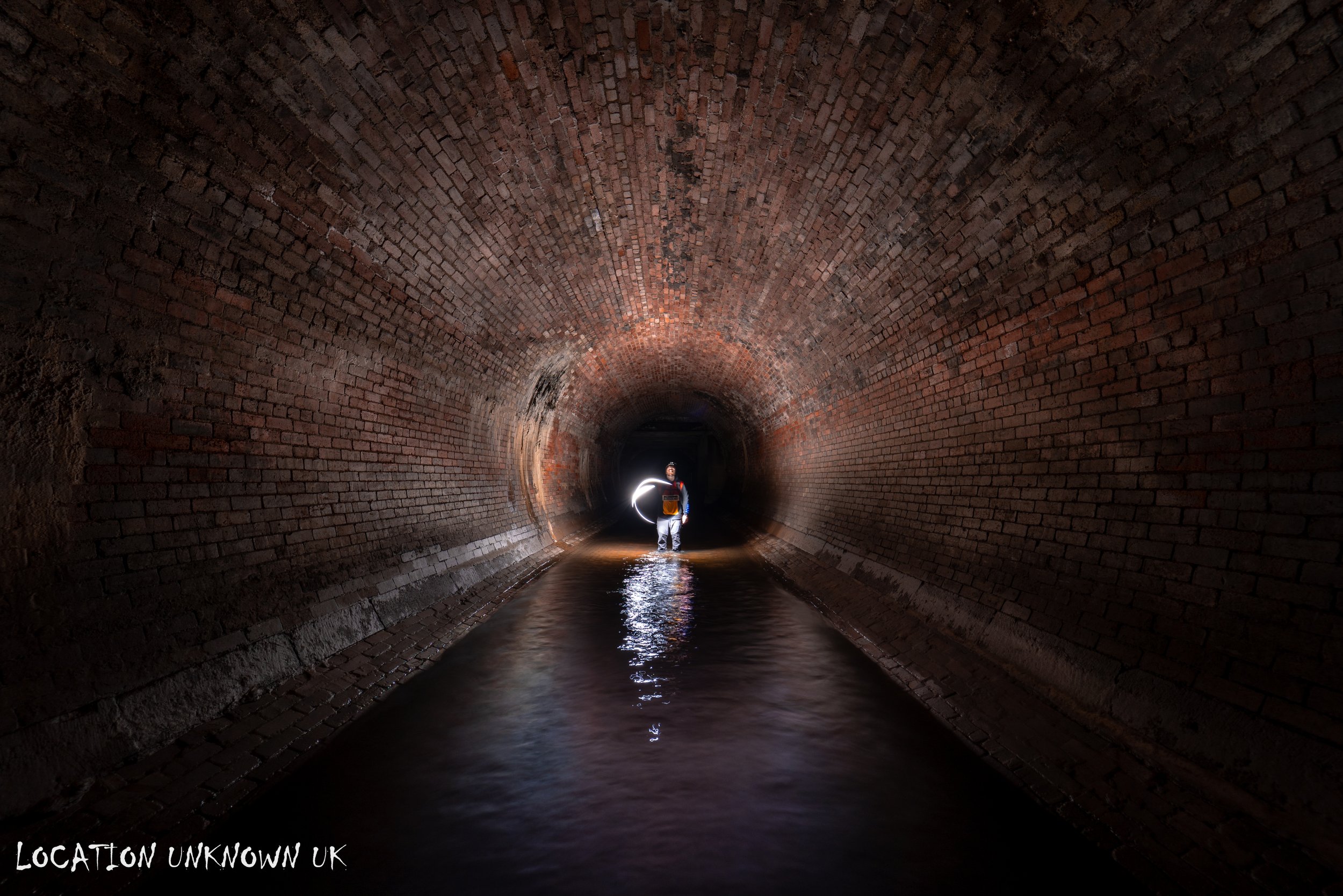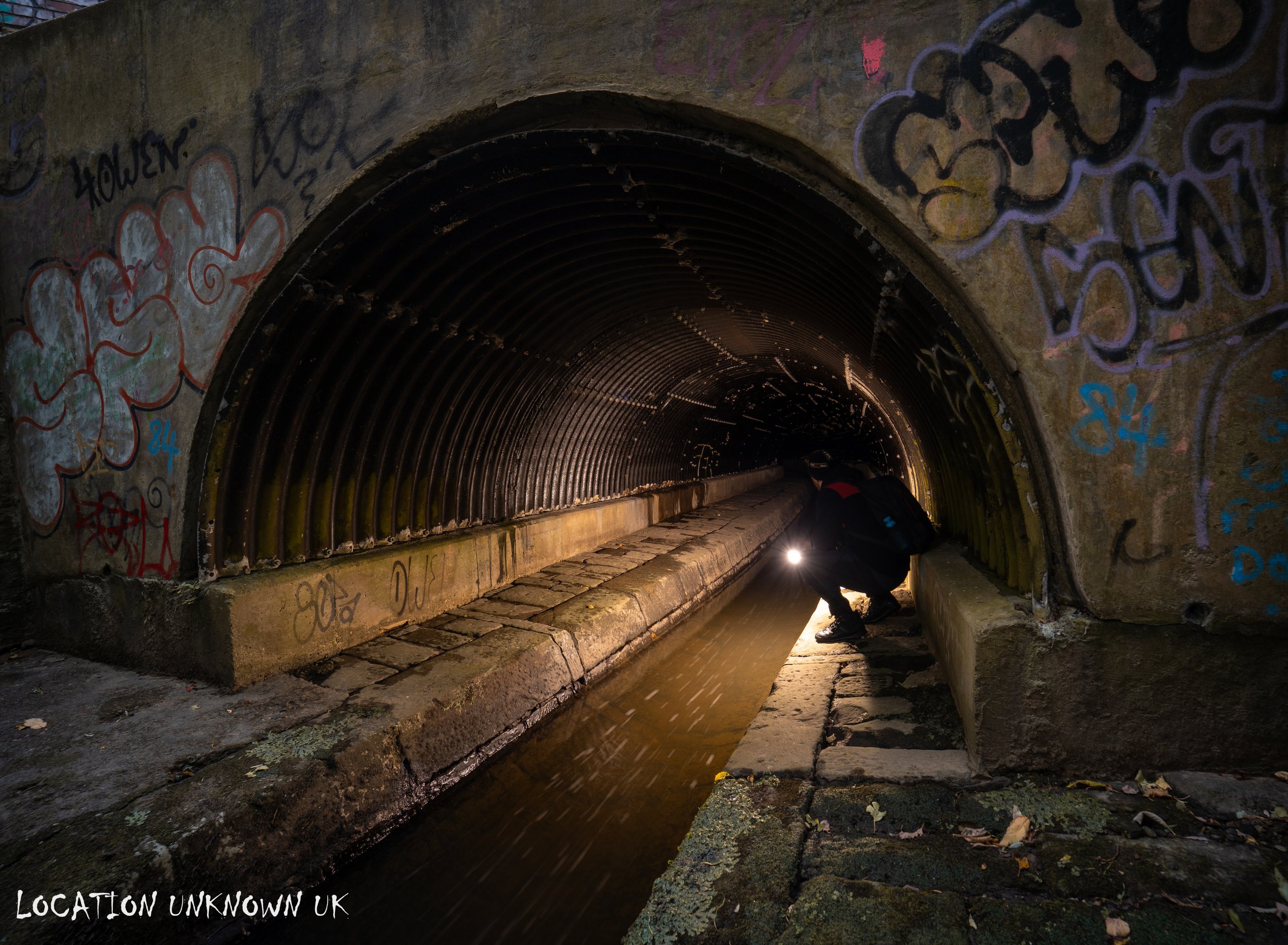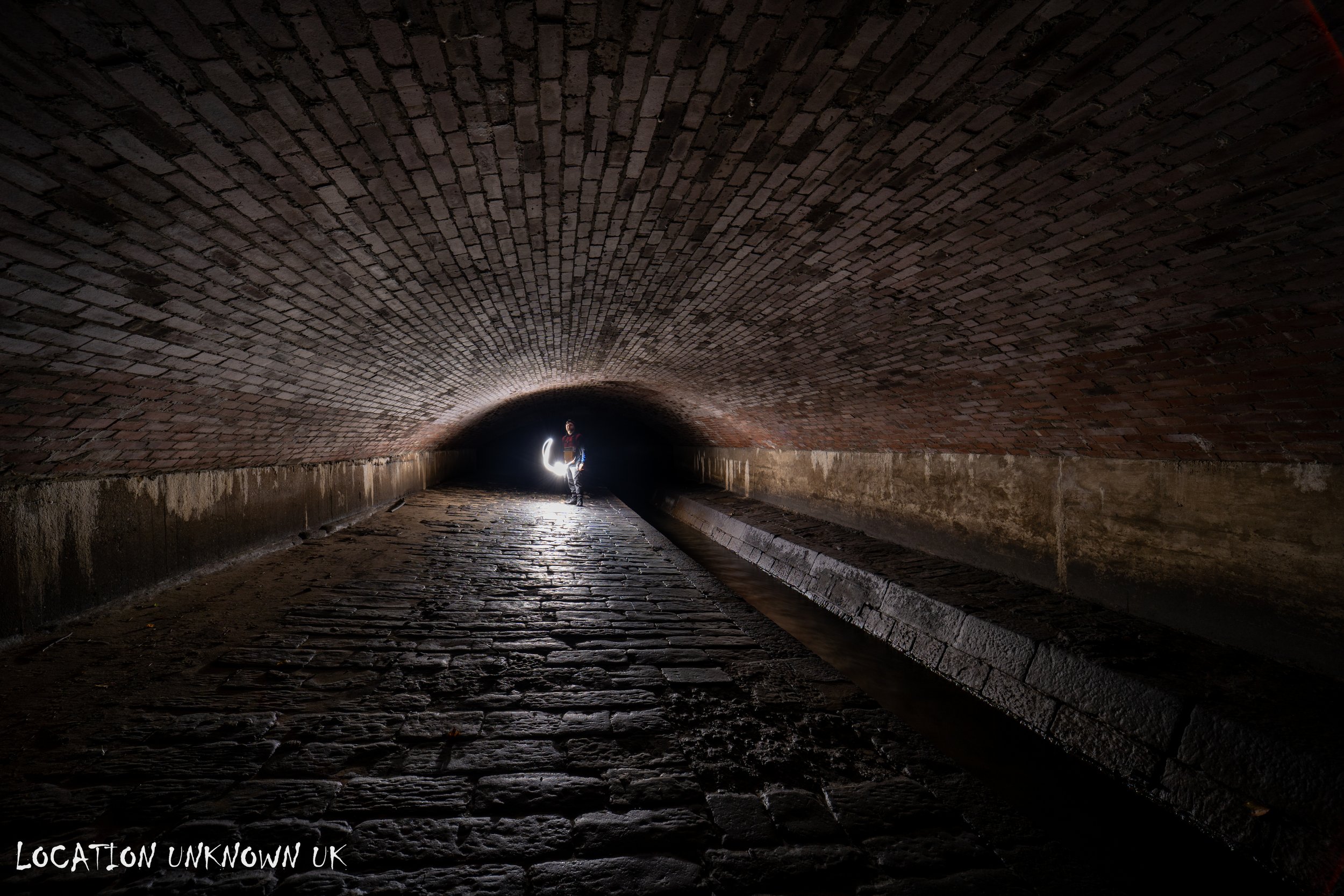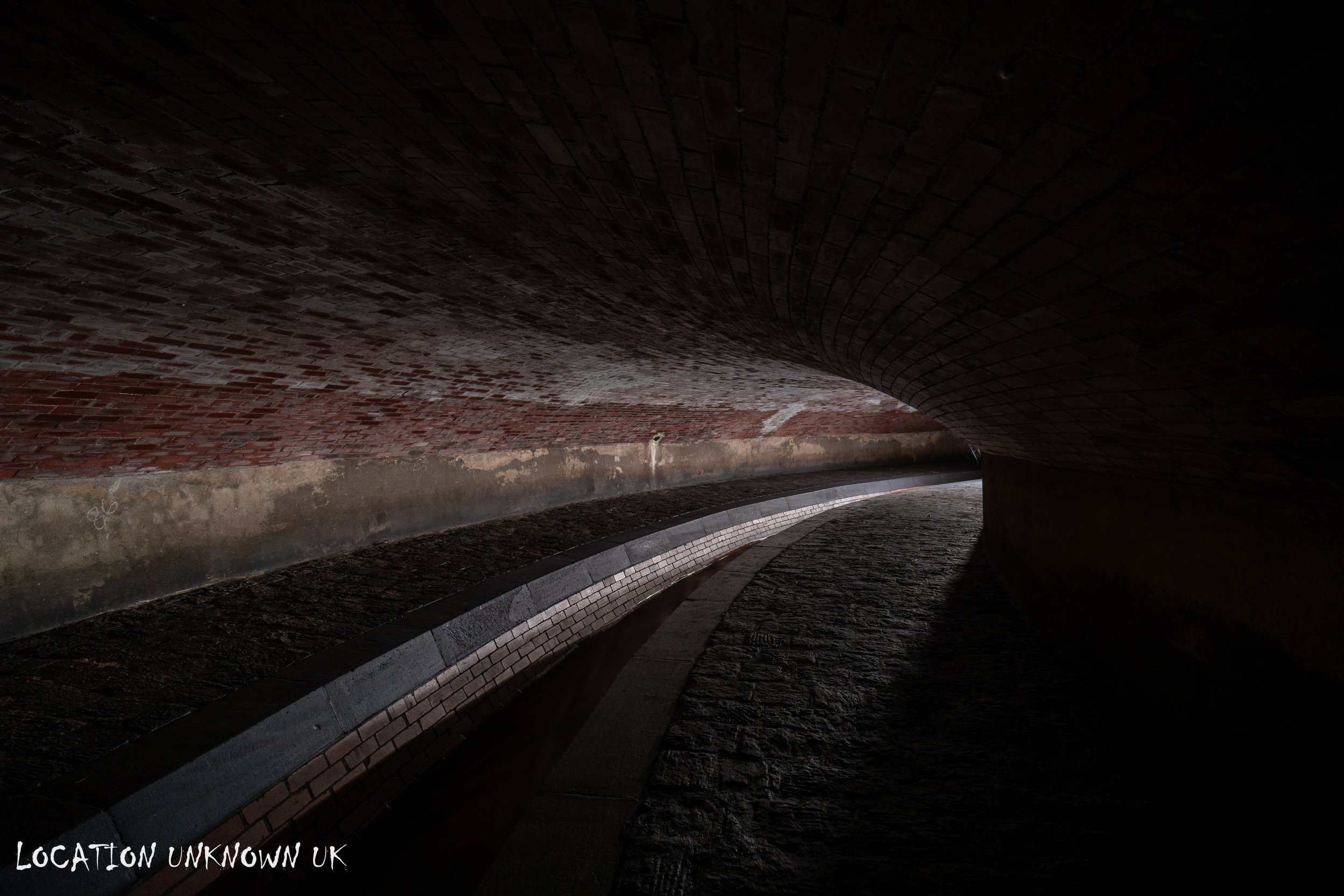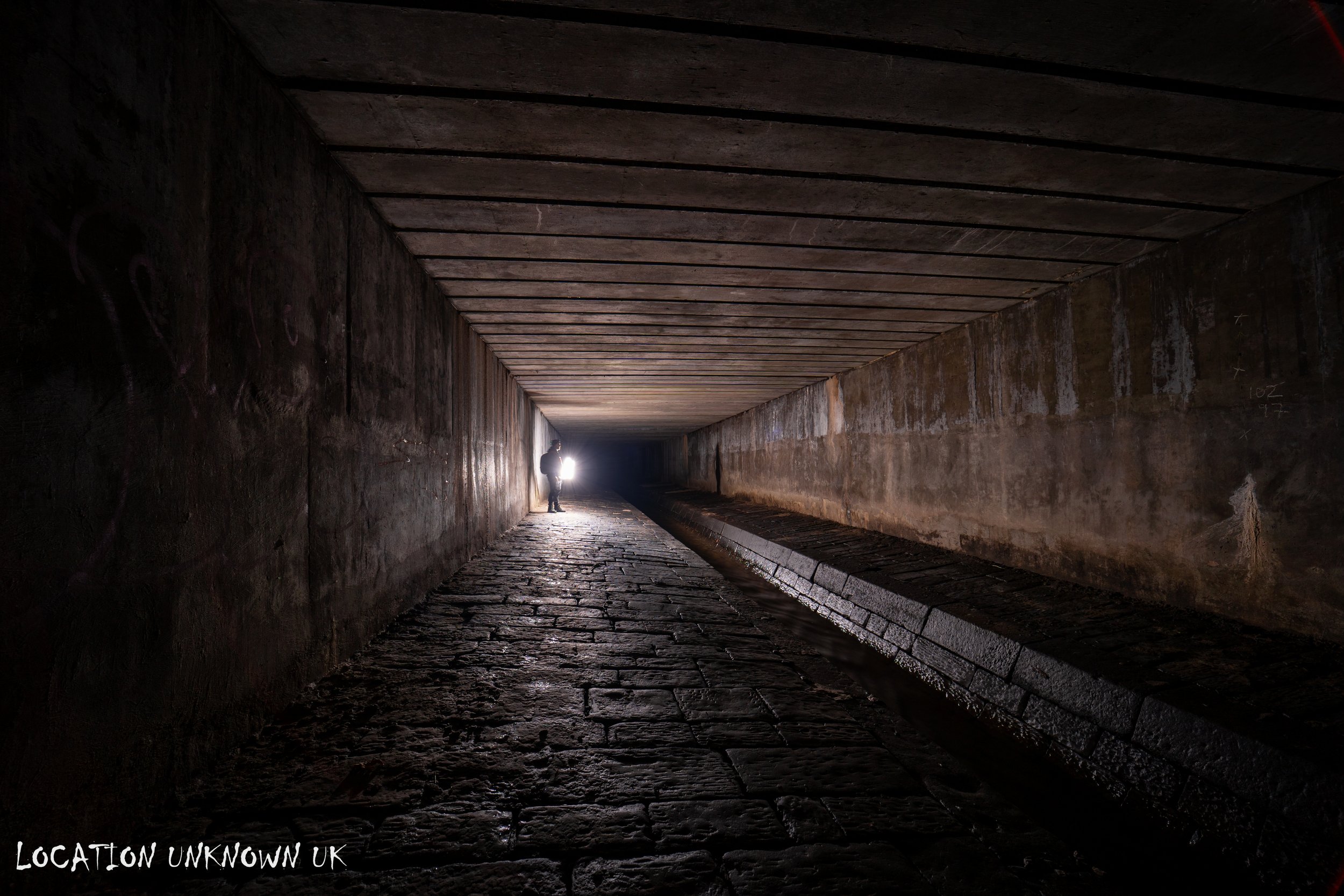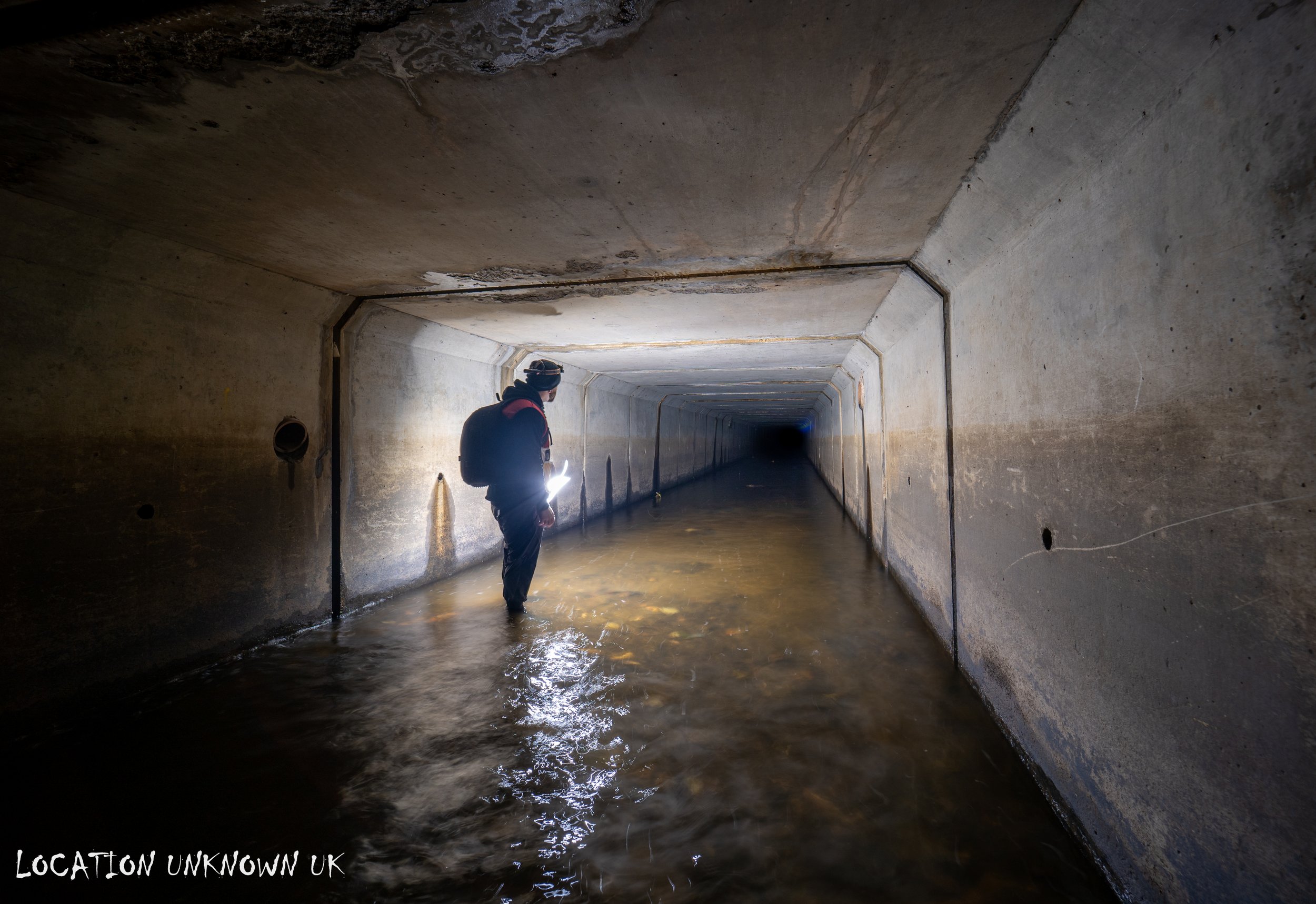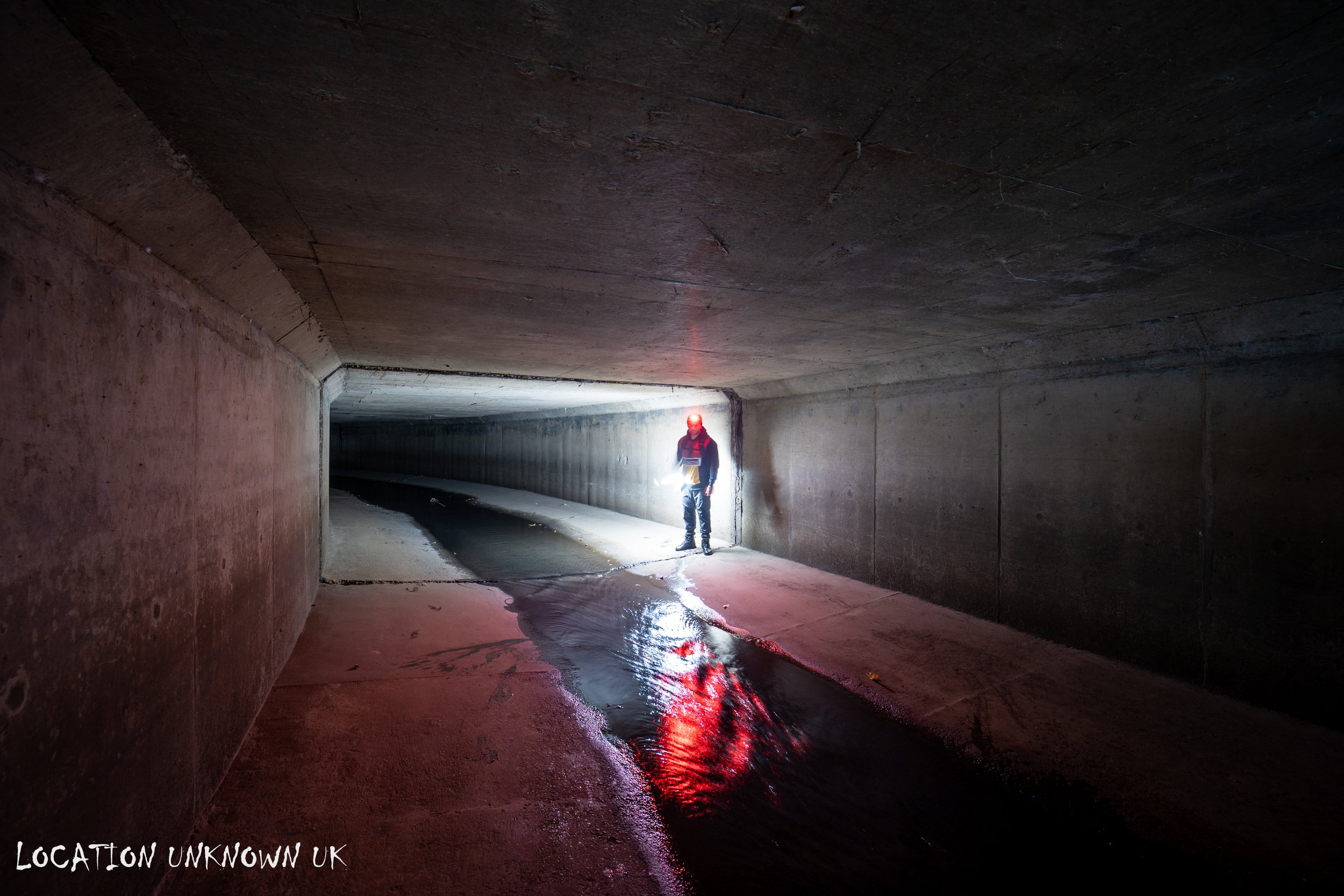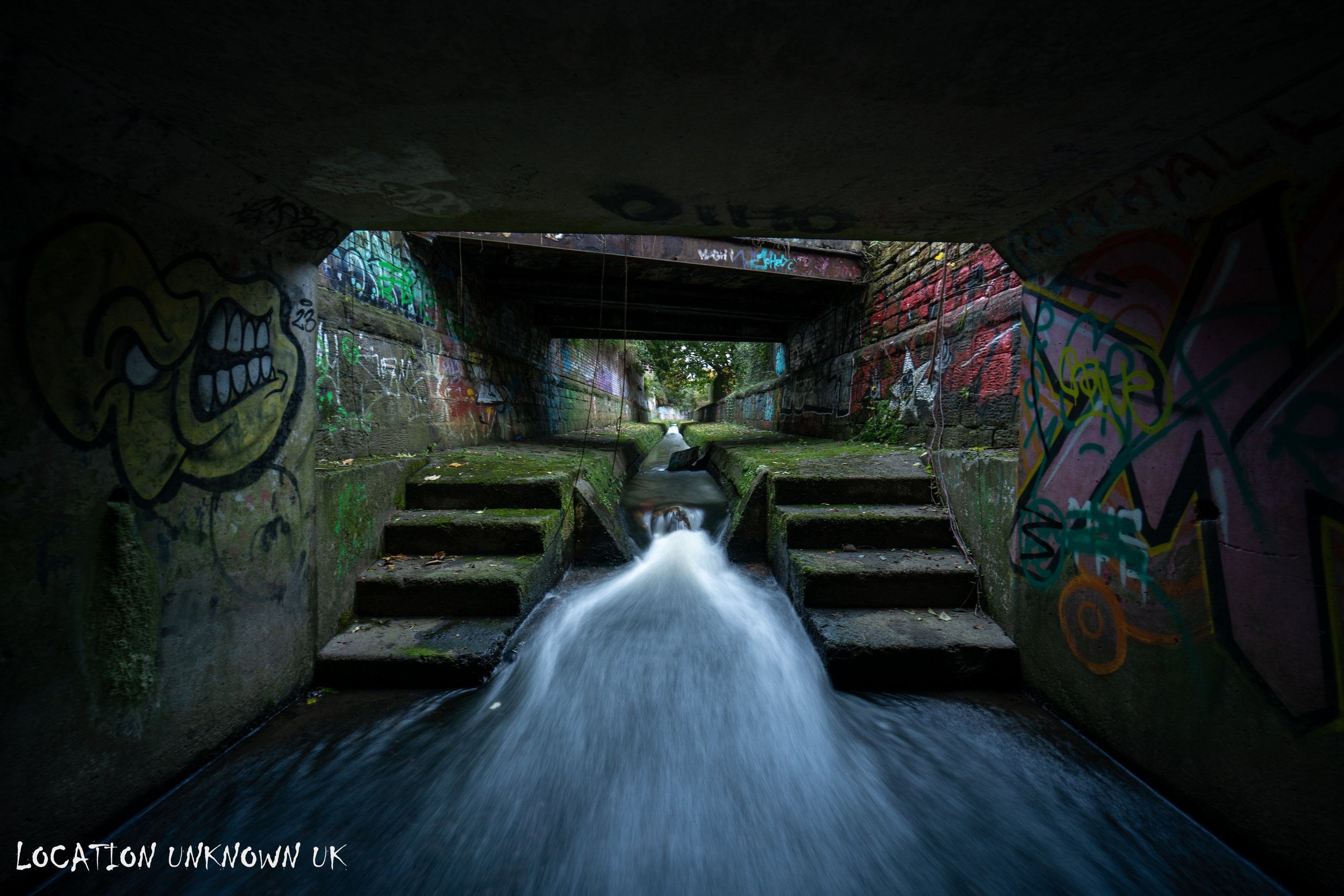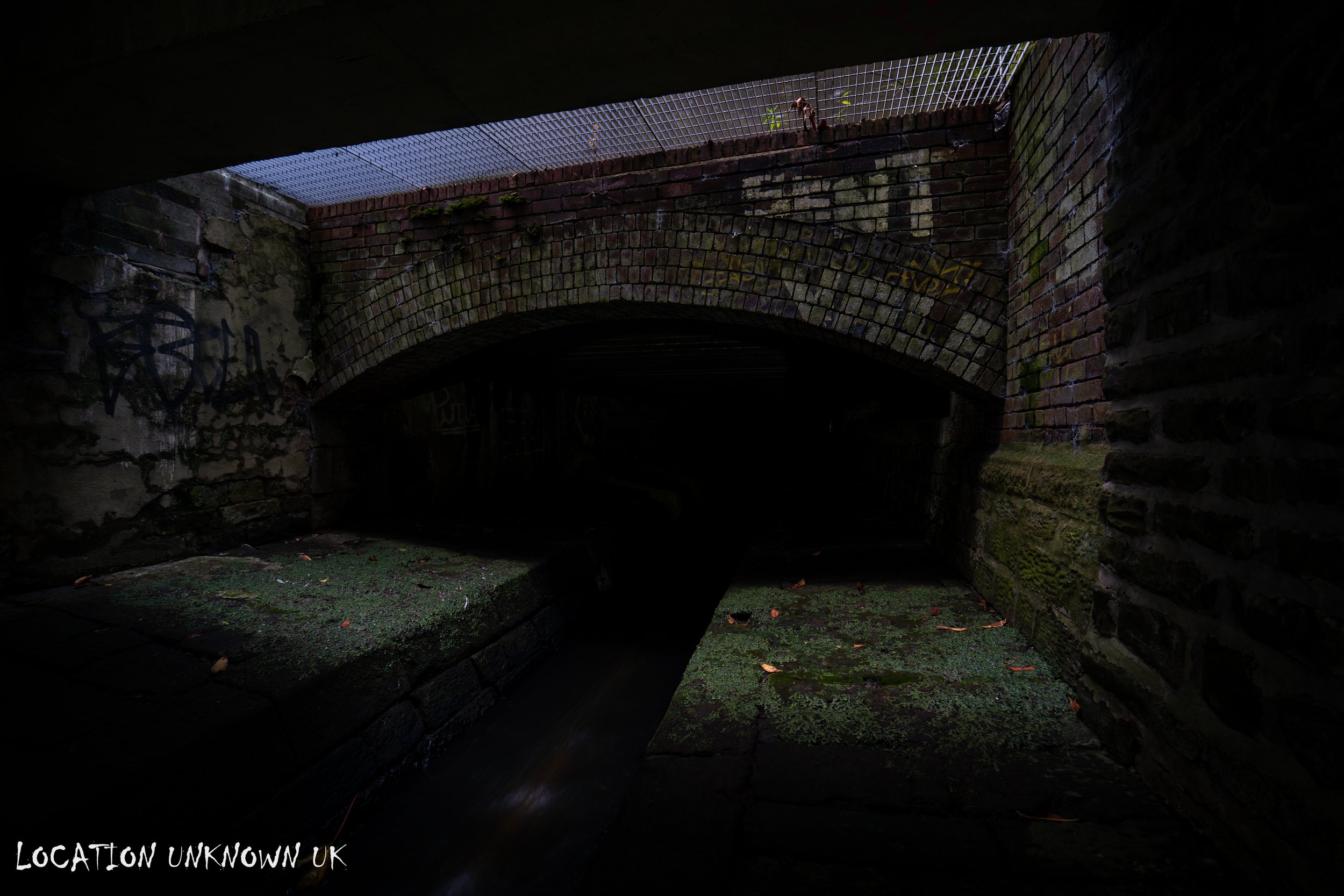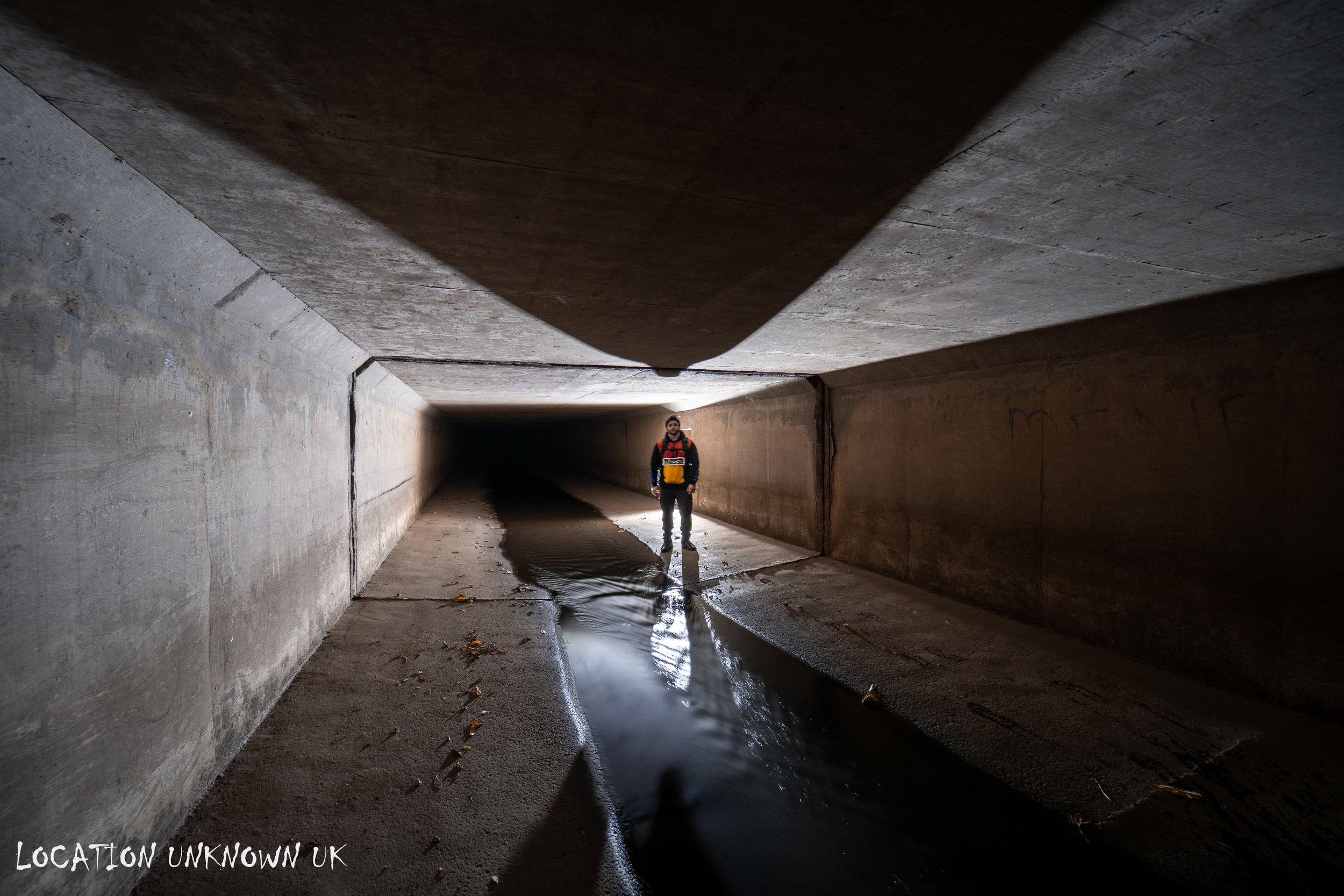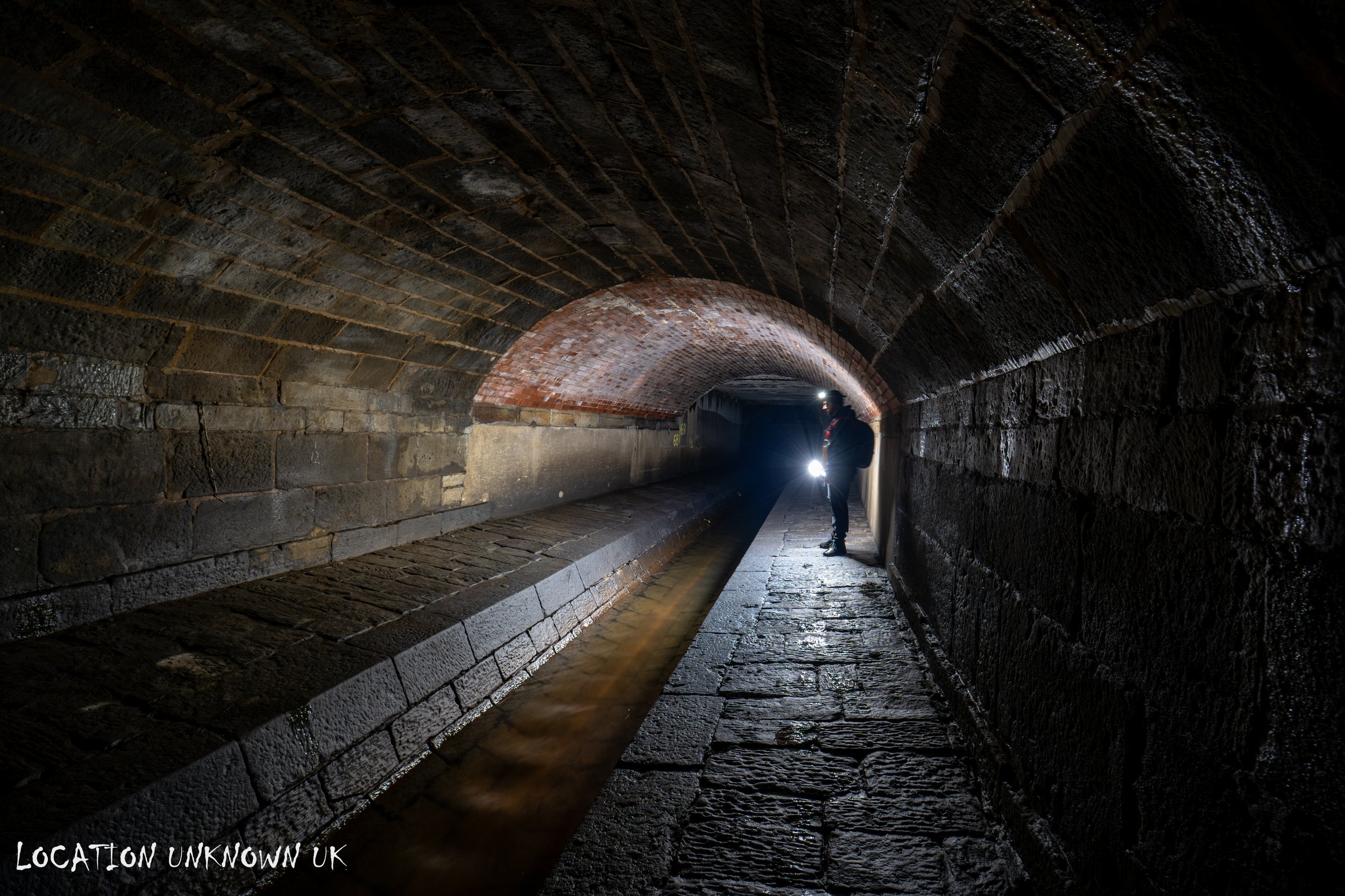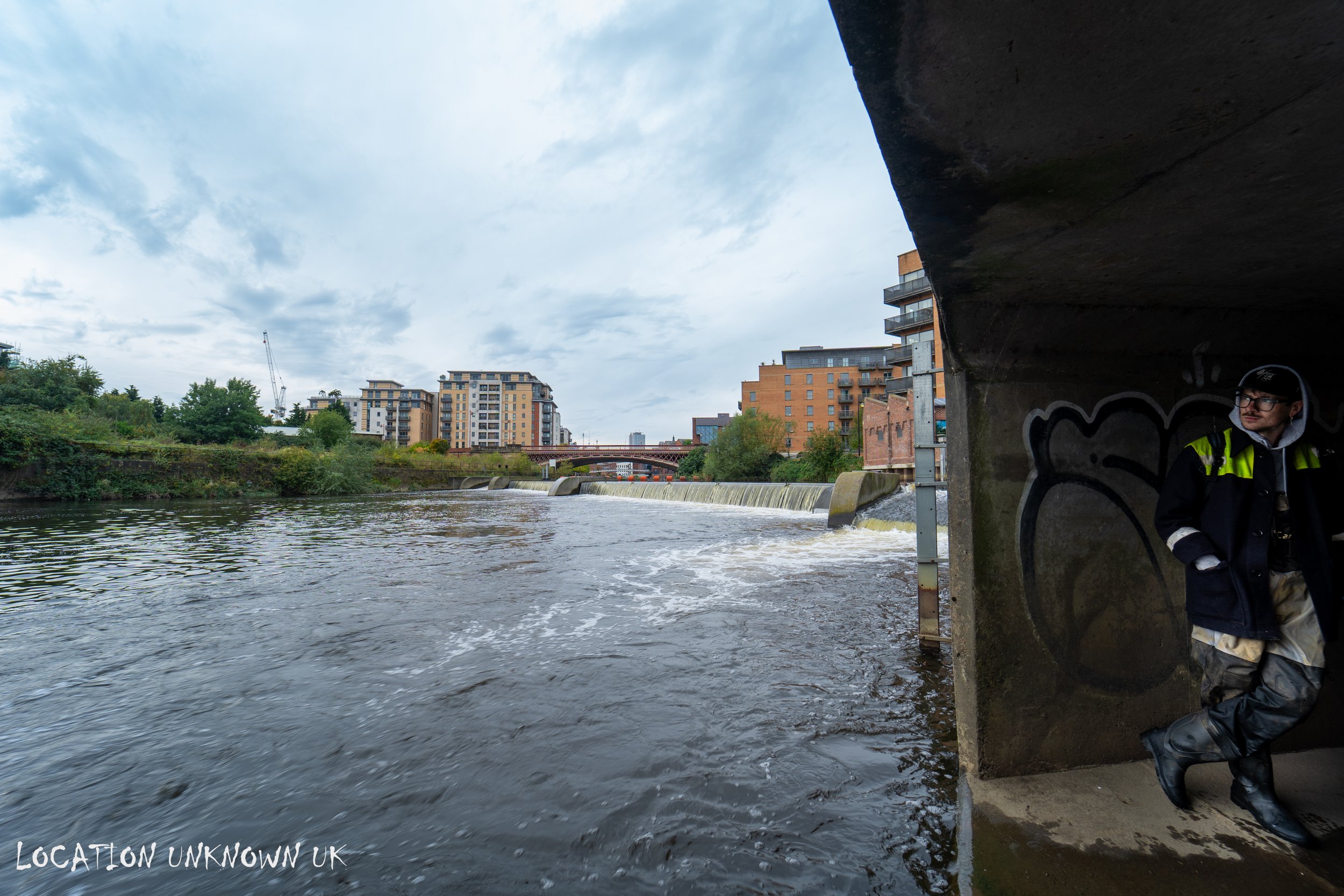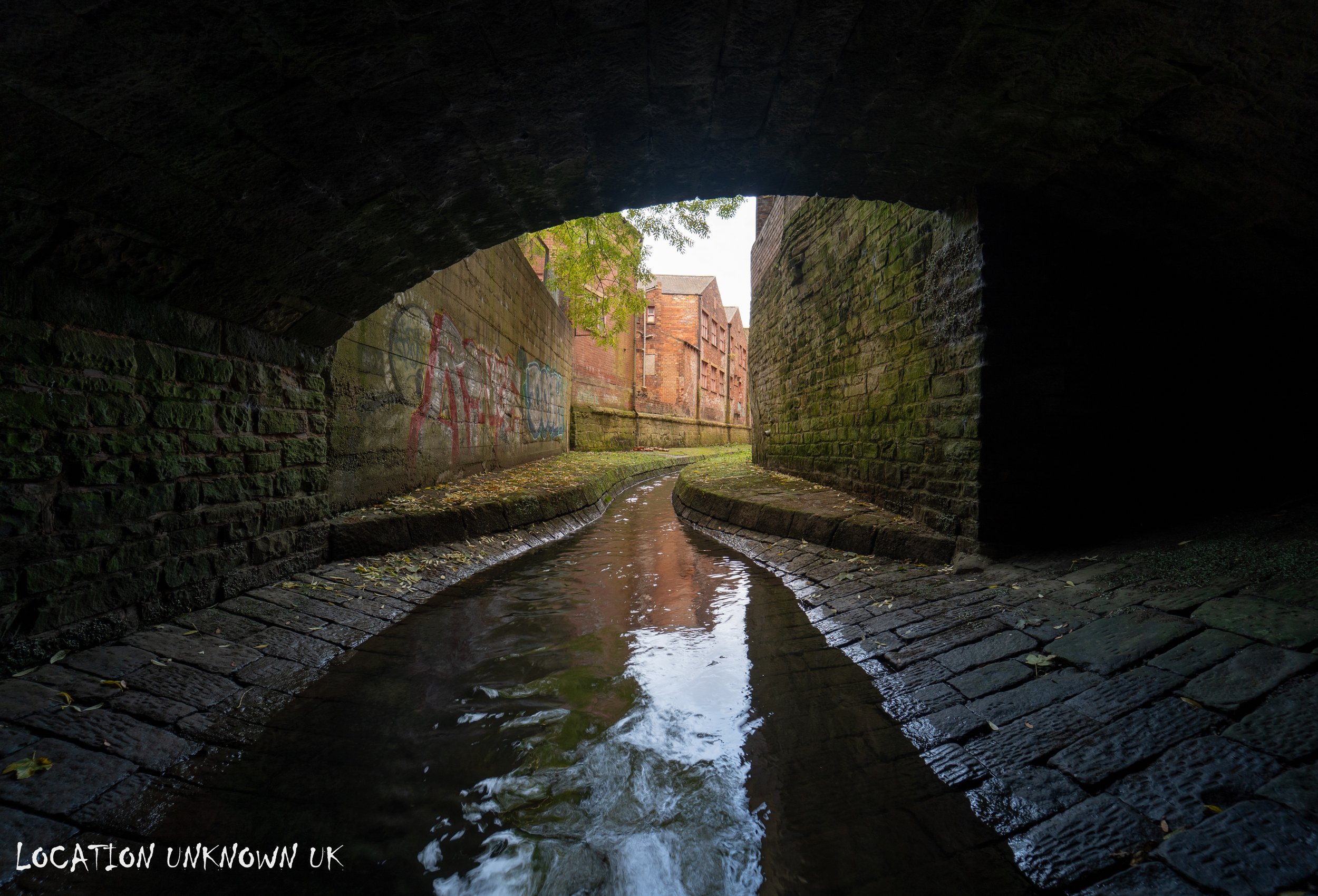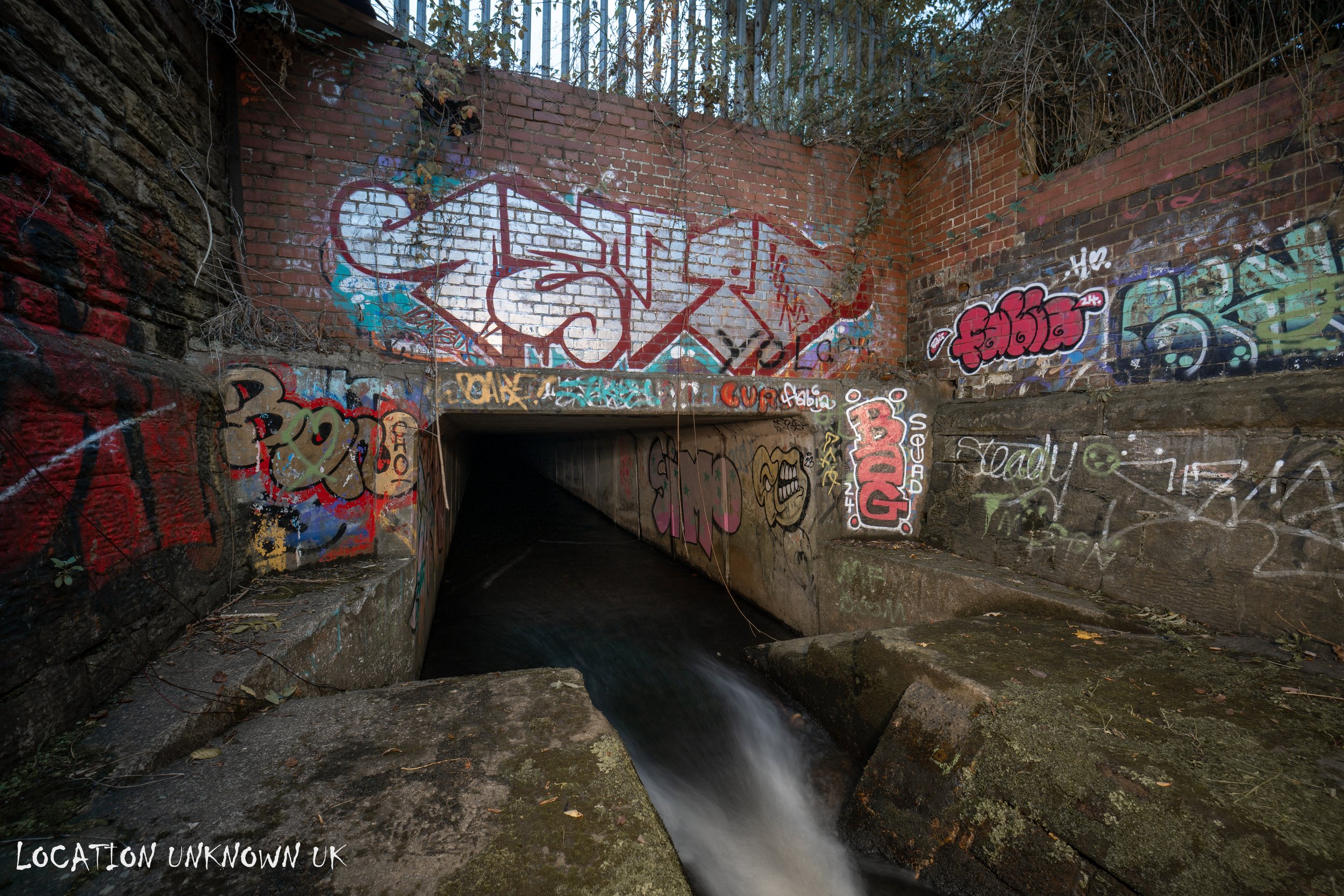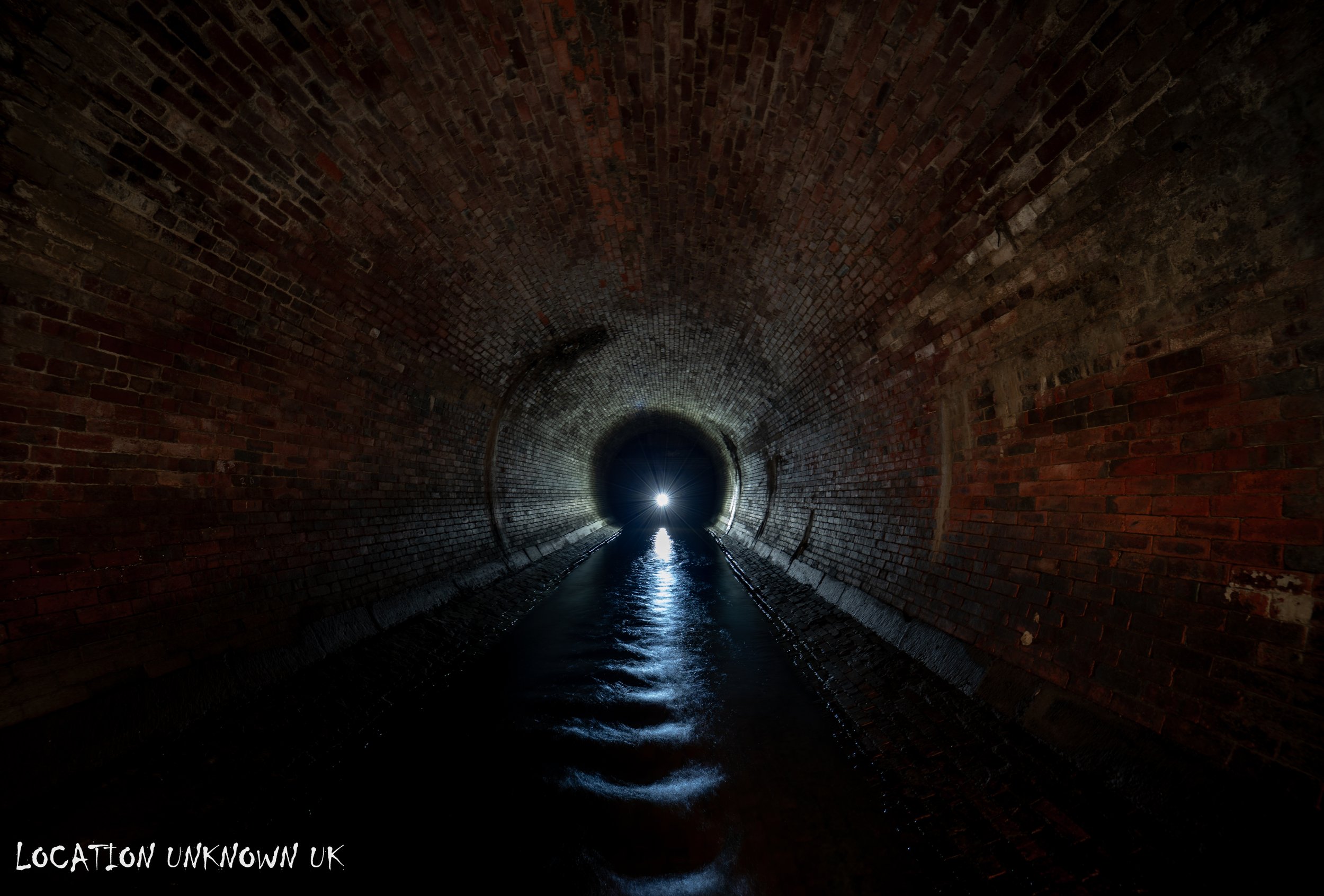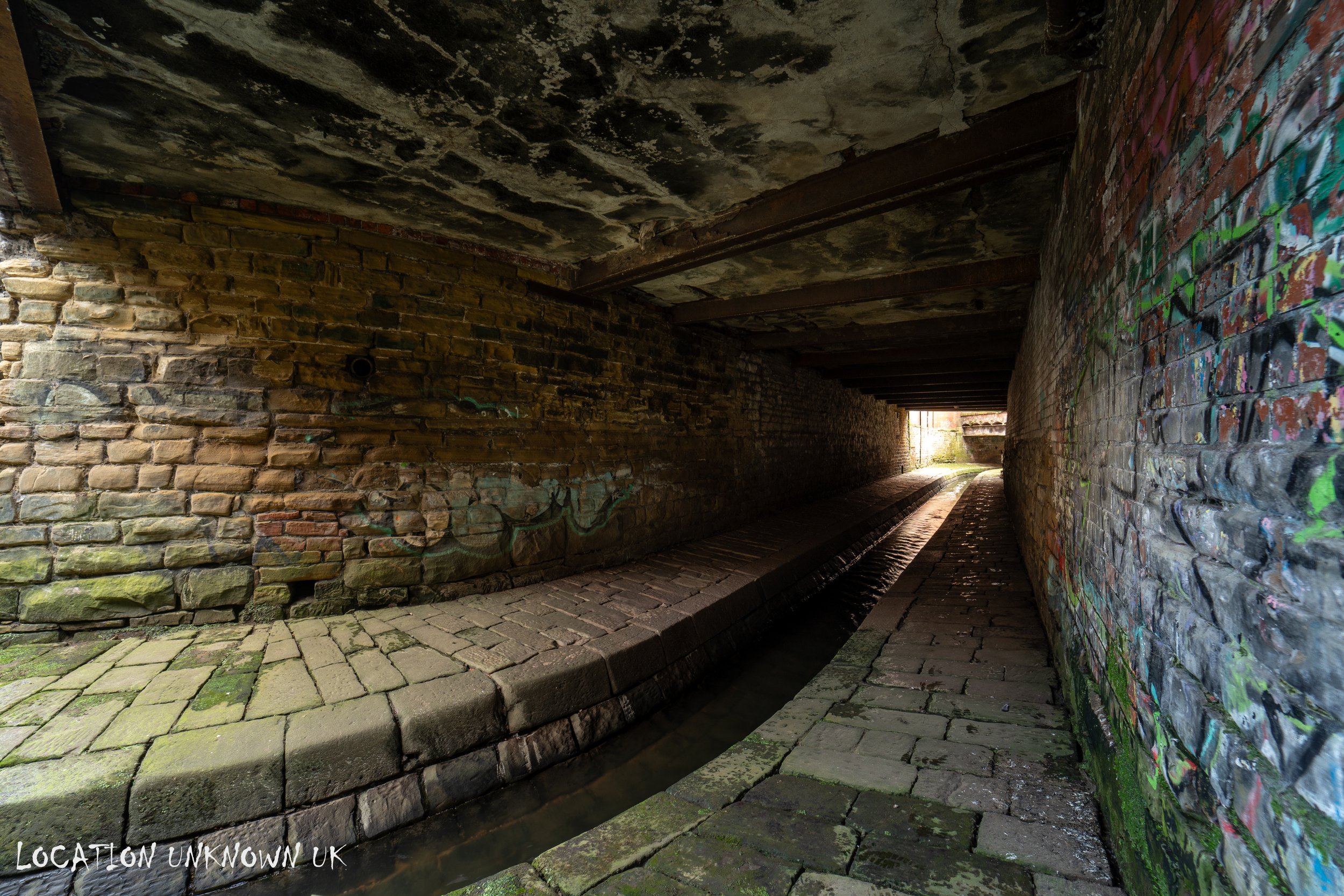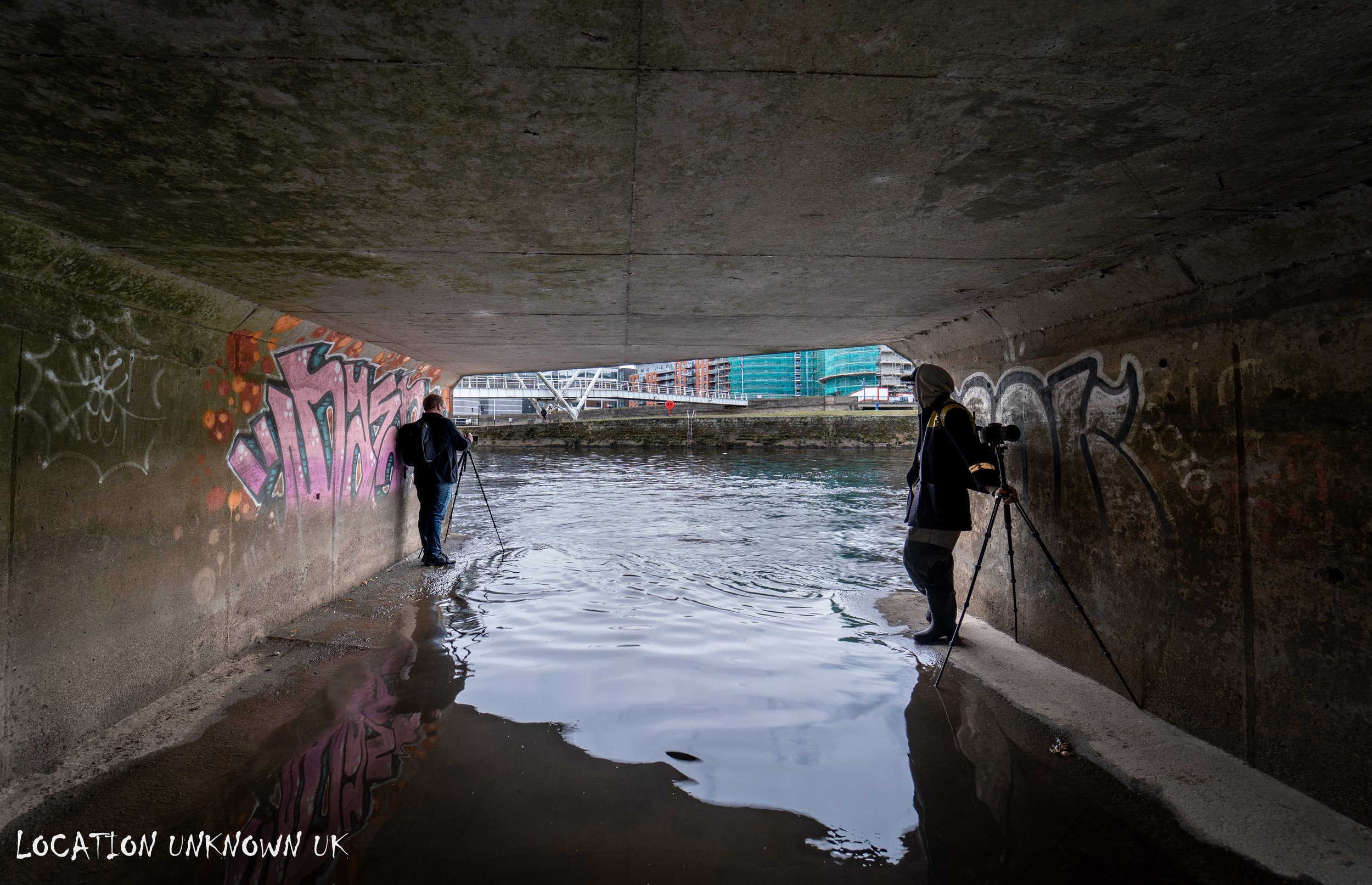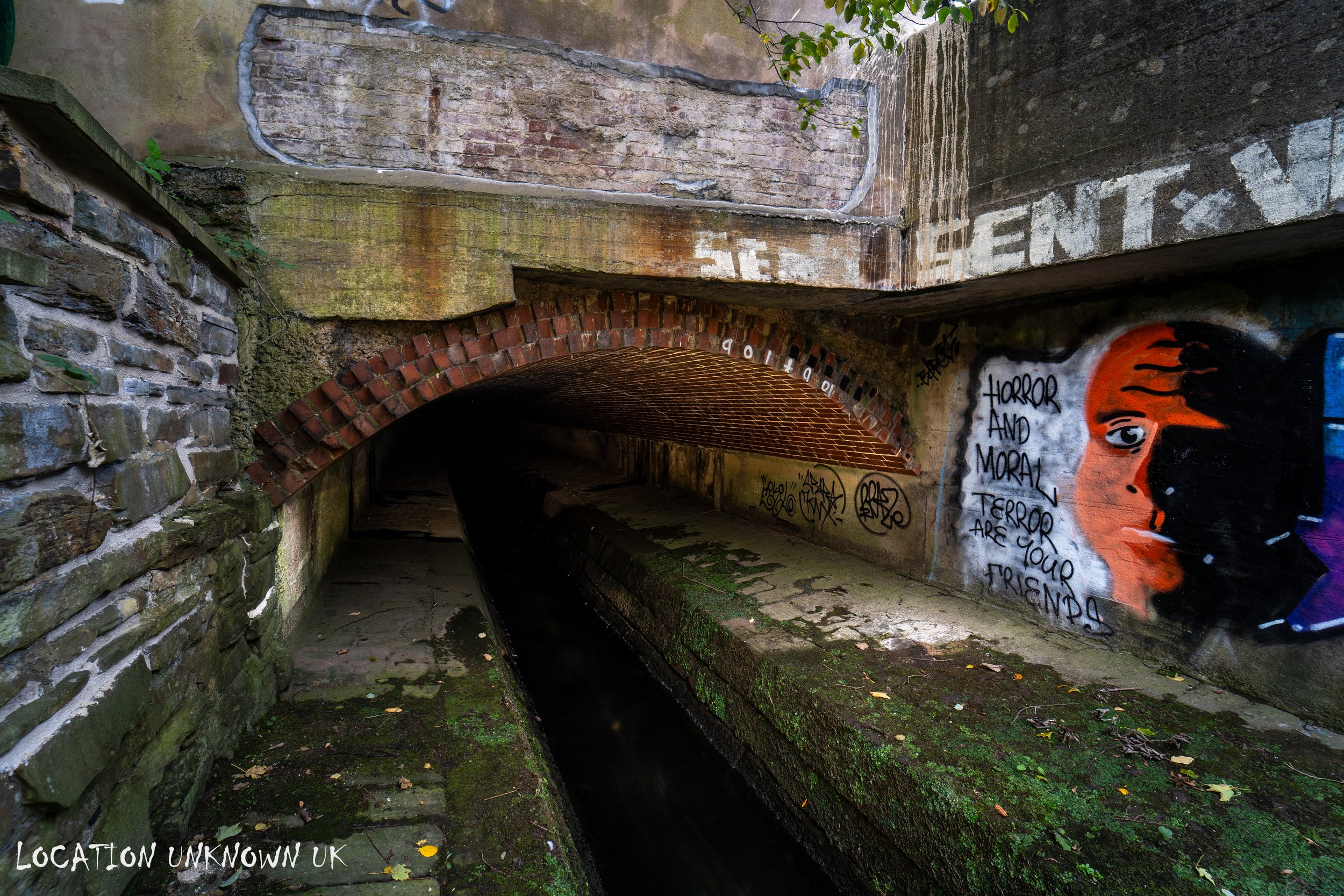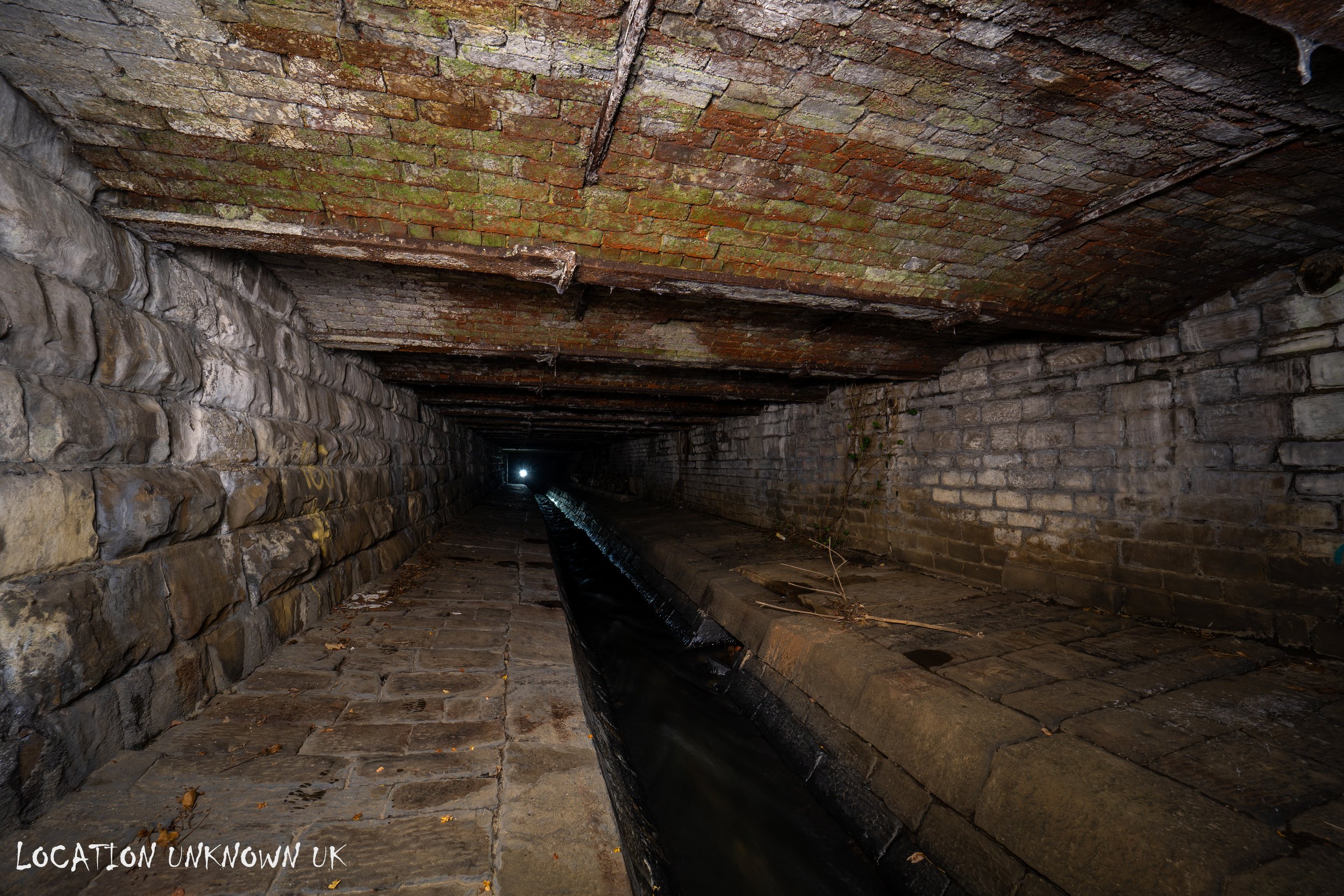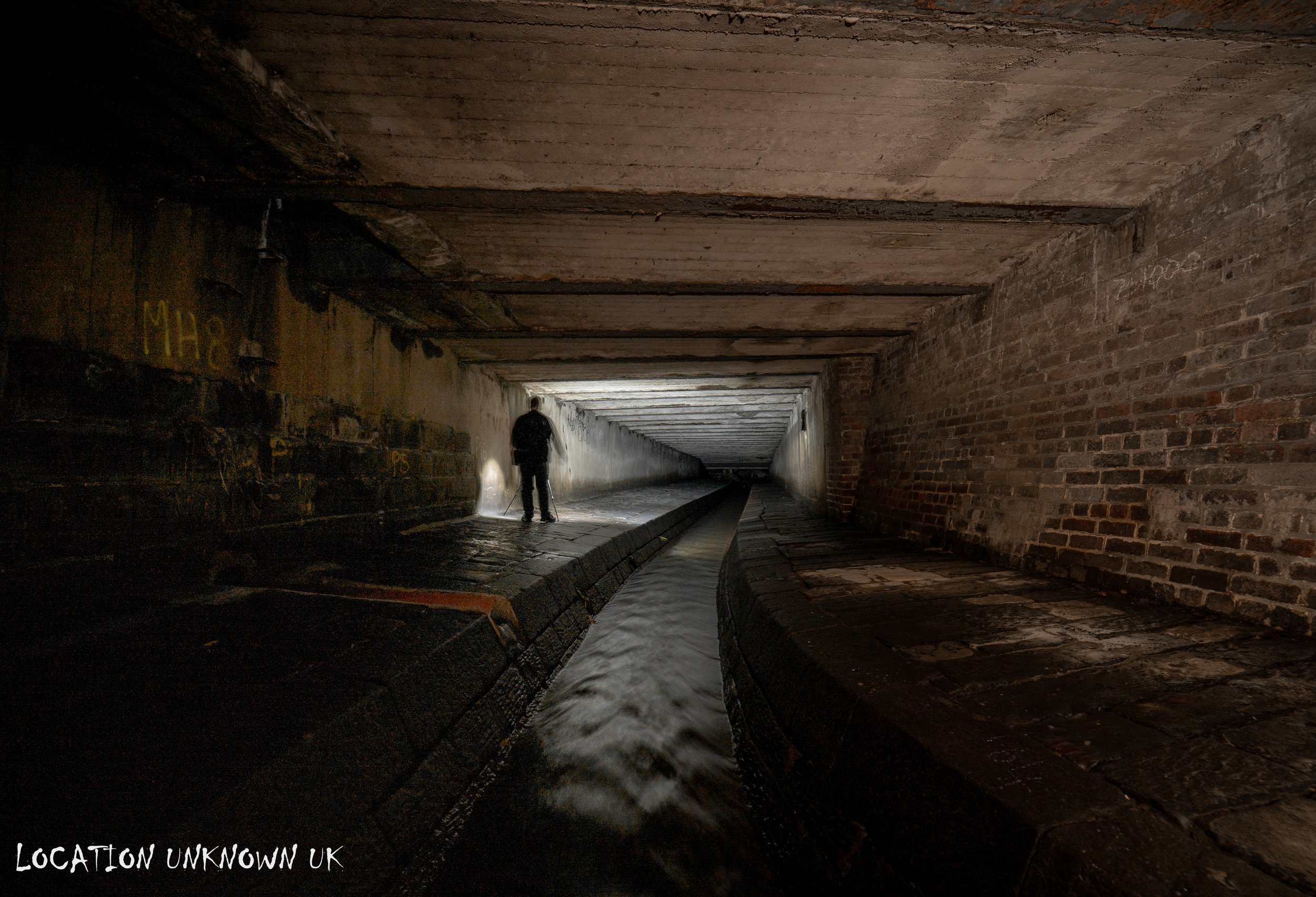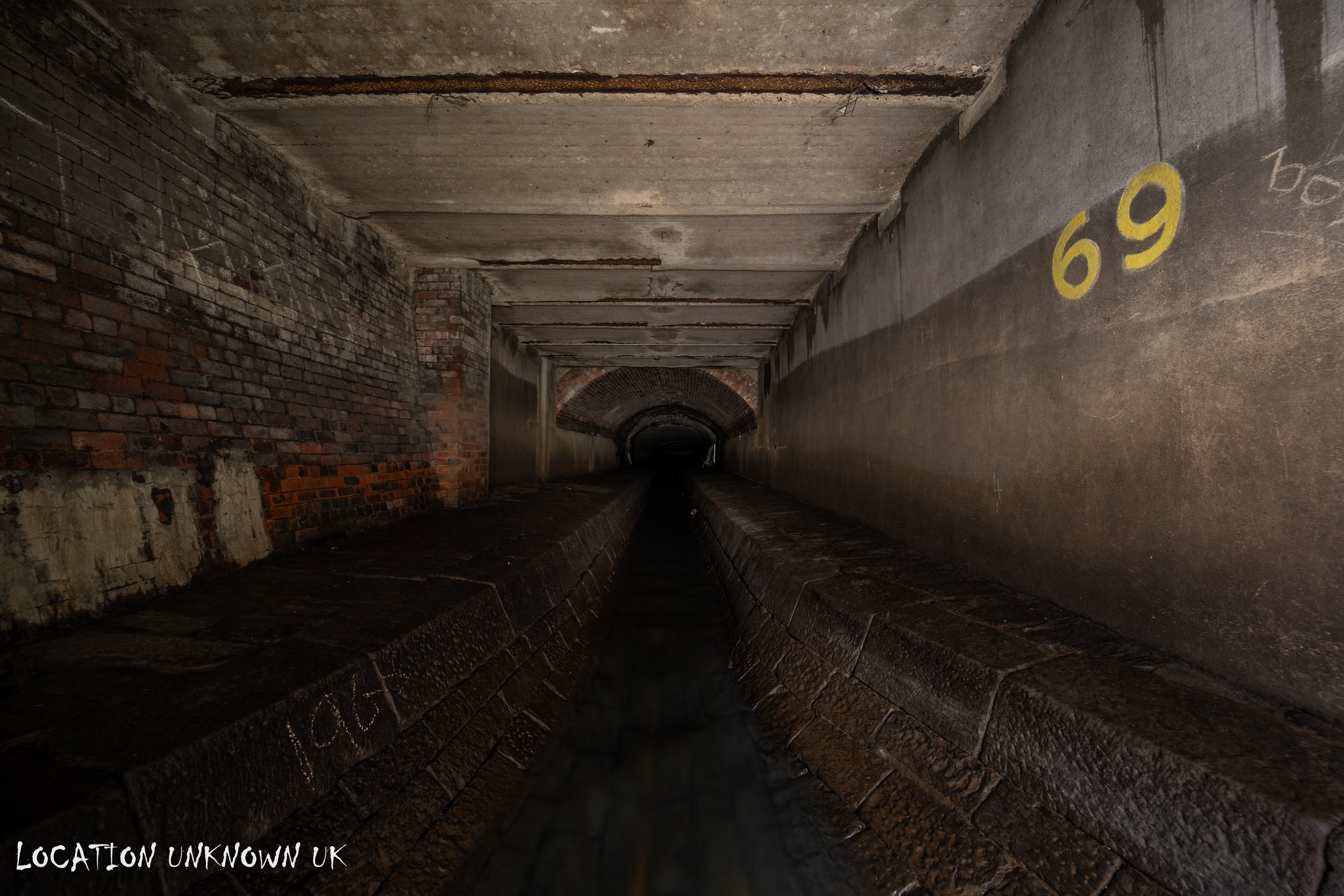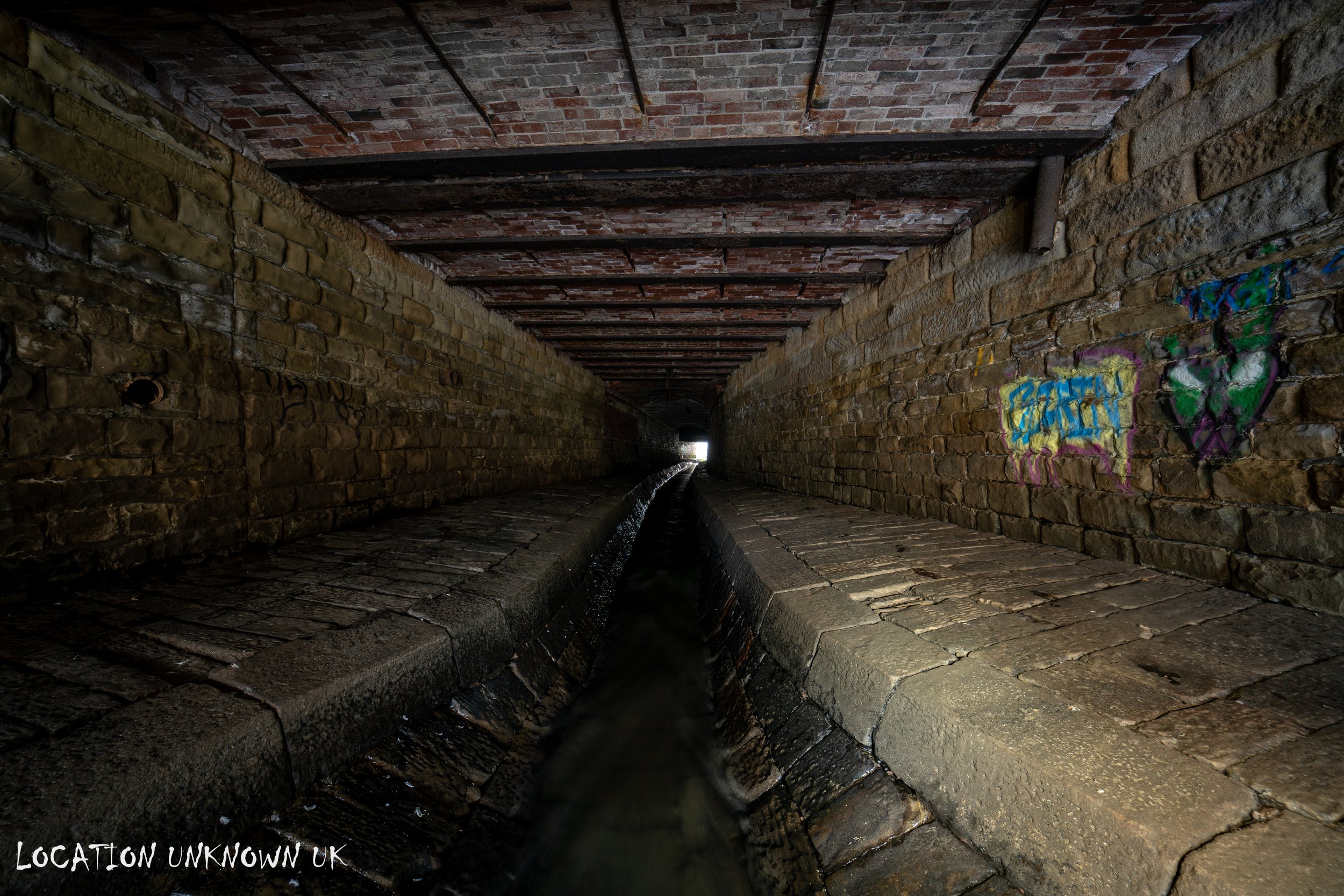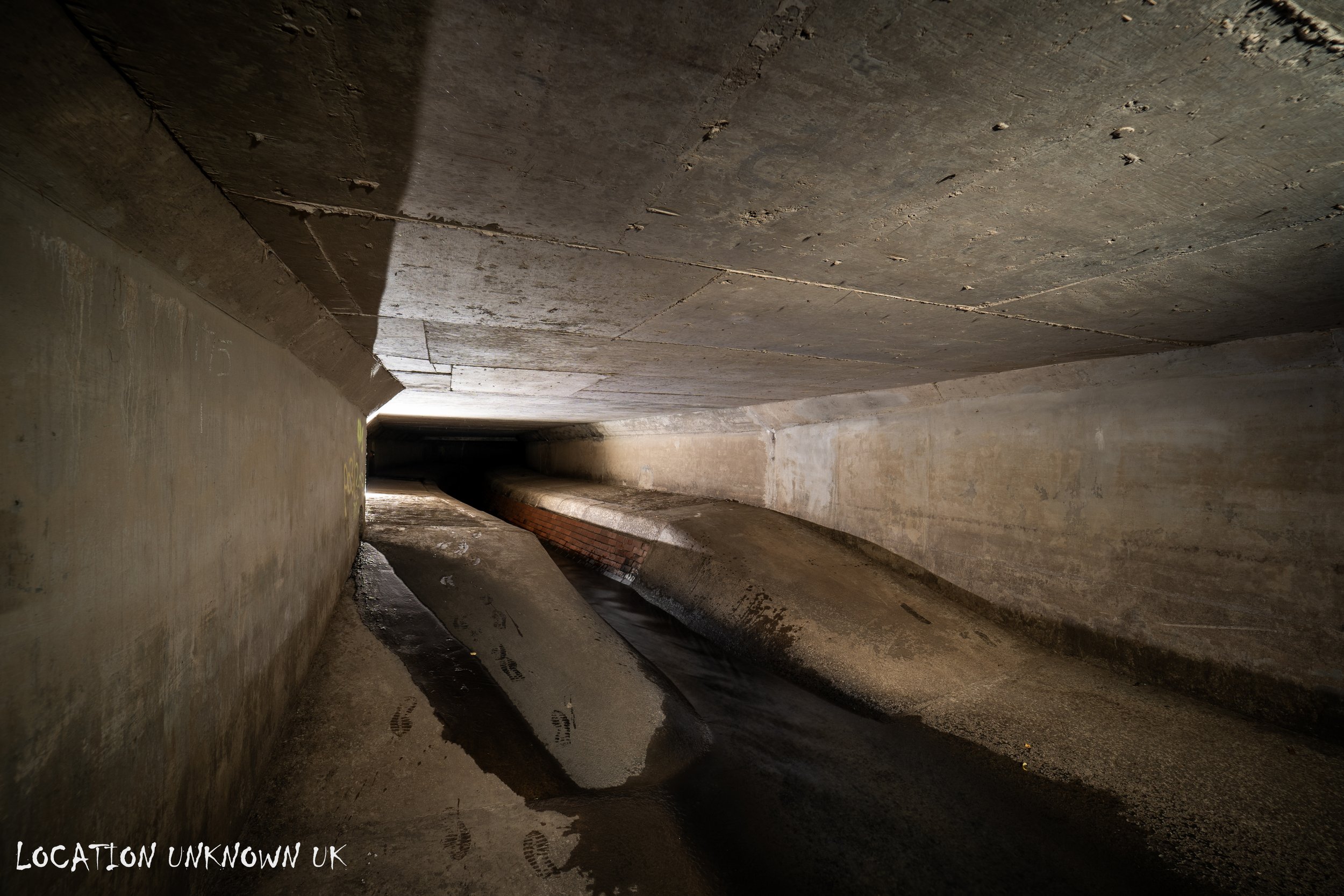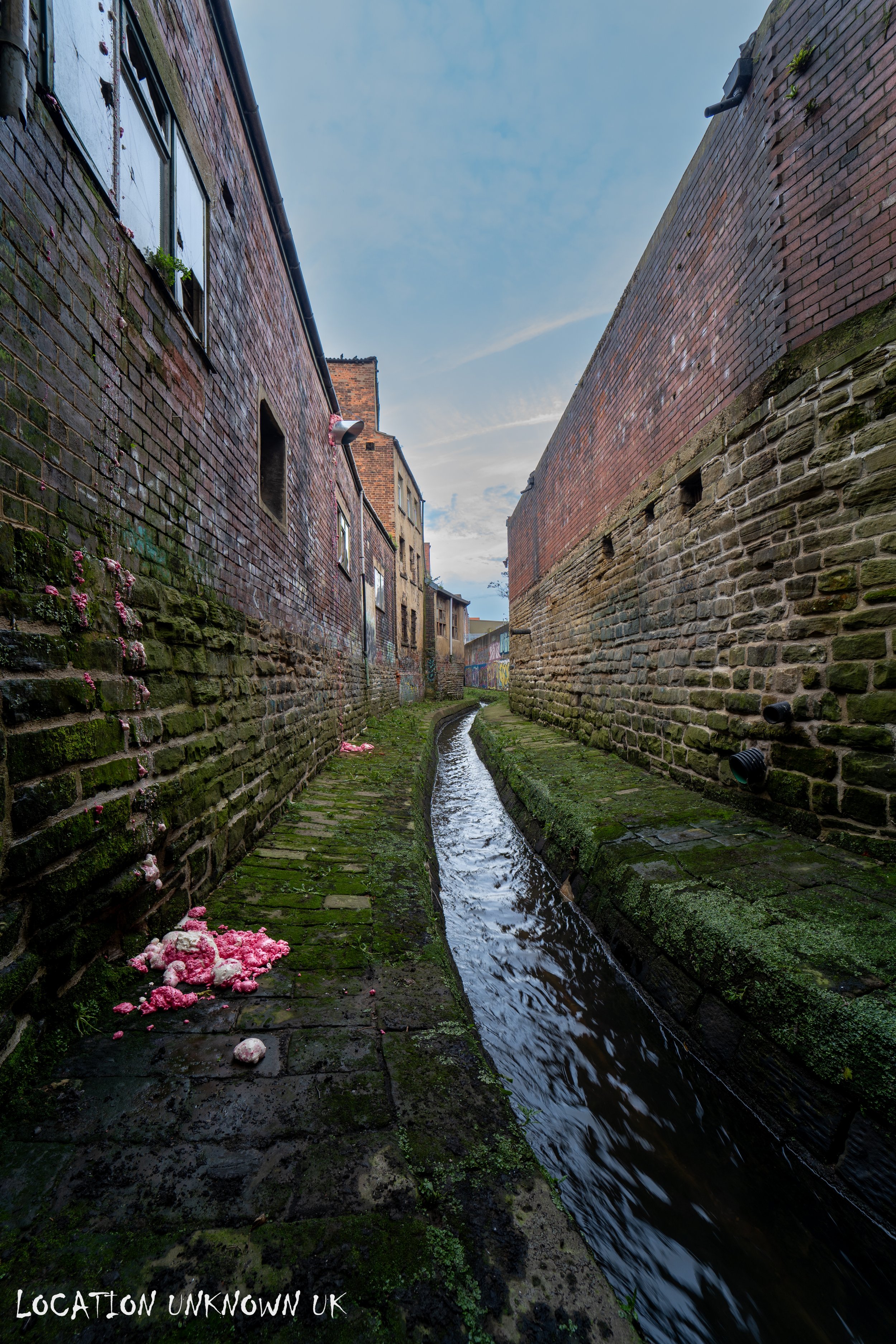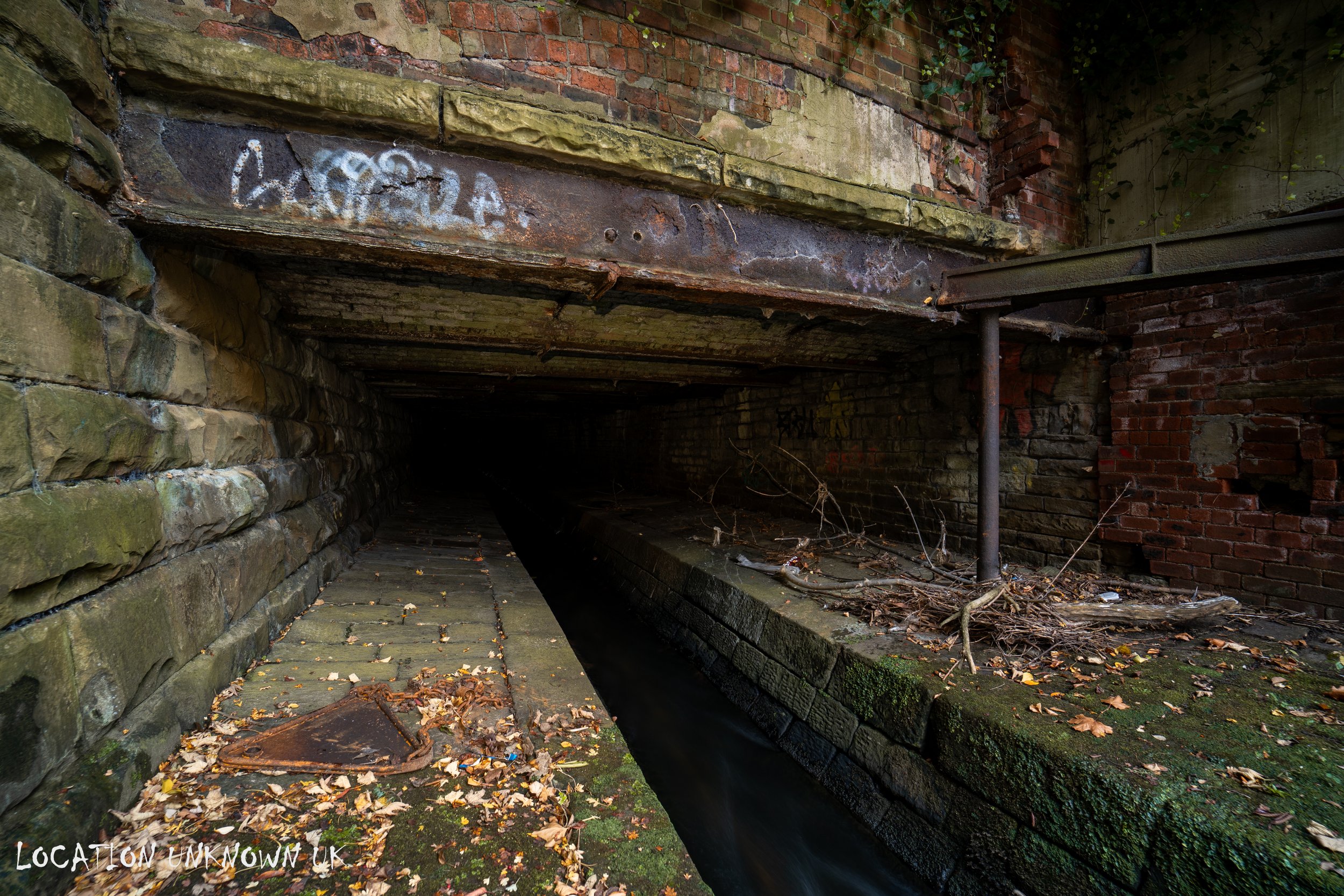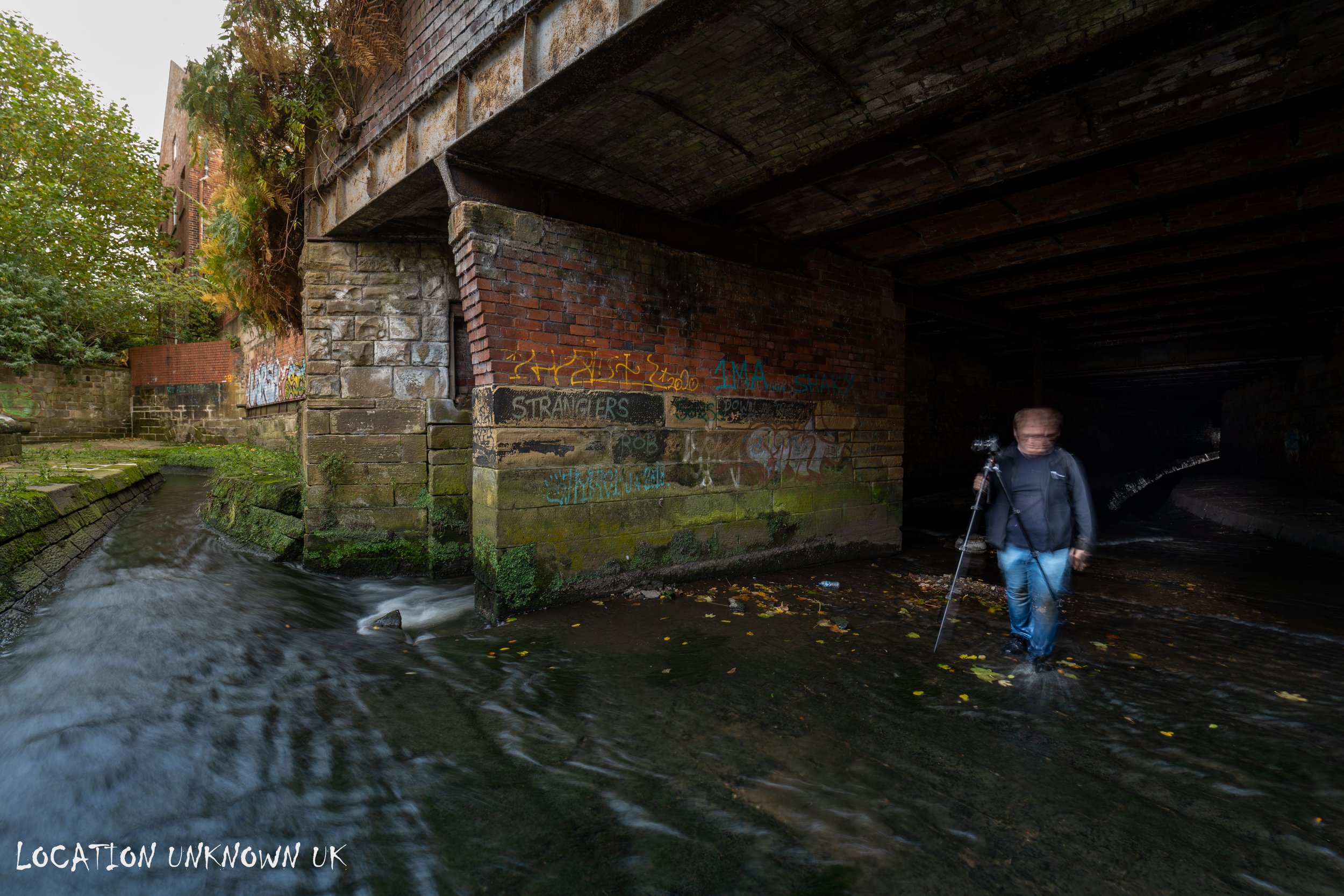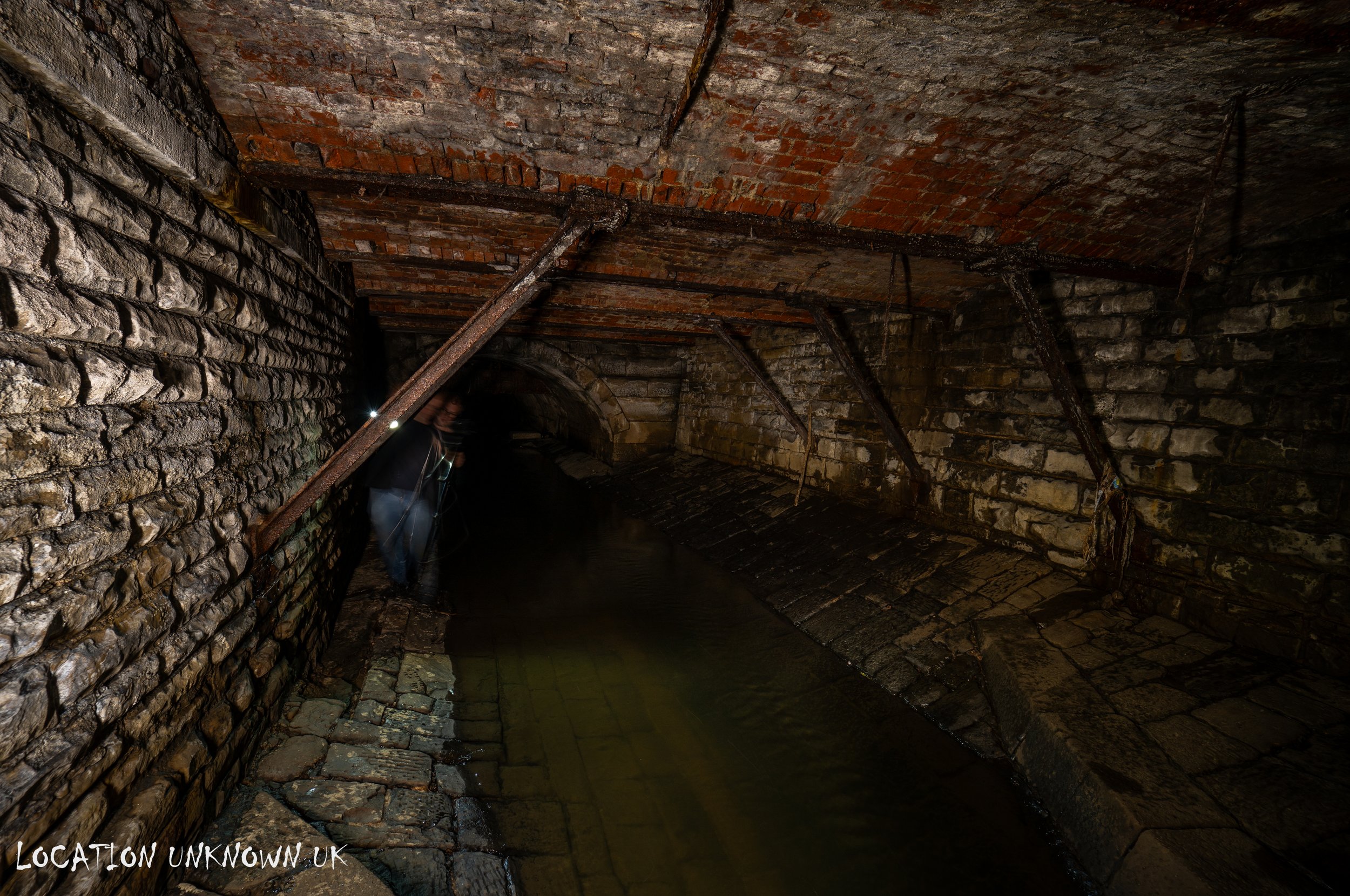Masticator - Leeds
After failing at what we presumed would be some easy walk-in derps scattered around the city, we found ourselves standing at Masticator’s infall. The water level was low, only a few inches deep, and from what I’d seen of the place, it seemed to stay that way throughout. With this in mind, we decided against chest waders and headed in with just our shoes. I hadn’t explored a drain in normal shoes before, but the extra grip felt like a fair trade-off for cold feet.
The start was a long slog through a concrete box culvert. While the walking height was comfortable, the stretch was a bit featureless. A shift in tone signaled the transition to a corrugated metal pipe section with a small channel running through the center. This section was short-lived, quickly opening up into daylight.
The Beck dips in and out of its subterranean culvert all the way to its outfall at the River Aire. Along the route, we encountered several sections of brick culverts and short bridges. As drains go, it had a fair bit to offer. One of its more impressive features was a 14-foot brick pipe section that seemed to emerge unexpectedly from a plain concrete section.
Eventually, the ceiling dropped, forcing an awkward crabwalk or stoop for a short while until the drain split into two channels. Both paths led to the same endpoint, connected by several “windows” between them. A short walk through another concrete box section brought us to the outfall at the river, where passersby on the bridge above were visibly surprised by our presence below.
There’s no way out at the outfall unless you’re a duck, so the trip had to be done in reverse. By this point, our feet were beyond cold—time to GTFO.
History
Masticator follows the flow of the Meanwood Beck—a historic stream in West Yorkshire, England. This beck begins in Adel, journeys through Meanwood and Sheepscar, and finally empties into the River Aire in central Leeds. Older records occasionally call it the Sheepscar Beck, though that name has faded with time. Once a vital water source for the village of Headingley, the Beck's role in the community is steeped in history. Two of Headingley’s earliest bridges were built to provide direct access to this lifeline. Yet, as Leeds expanded into one of Britain’s largest urban centres, the beck's volume diminished; much of its water now flows through the city’s network of drains instead. Meanwood Beck meanders through scenic spots like Meanwood Park and Woodhouse Ridge, sustaining the local wildlife and providing a crucial water source for Meanwood Valley Urban Farm. In the 16th to 18th centuries, the beck powered corn mills, its flowing water turning wheels that ground grain for the local community. By the 19th century, it served the burgeoning industrial scene, supplying water to tanneries and a chemical works—one of these sites, Sugarwell Court, has since become a university residence hall. However, the beck has seen its share of challenges. On March 29, 1999, a major pollution event marred its waters when 10,000 liters of oil leaked into the stream after an overfilled oil tank at the University of Leeds’ Bodington Hall overflowed. Today, the beck remains an important habitat for the native European crayfish, a species currently threatened by the invasive American Signal Crayfish, which carries a fatal plague. Bullhead fish, too, find shelter along its bed, easily spotted by waders through the mud and silt that line the stream.
